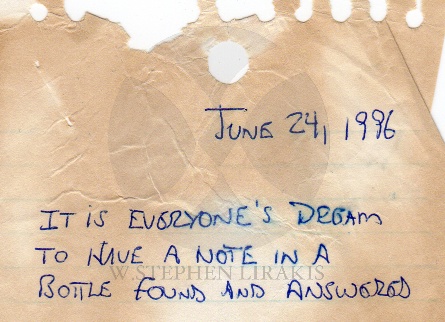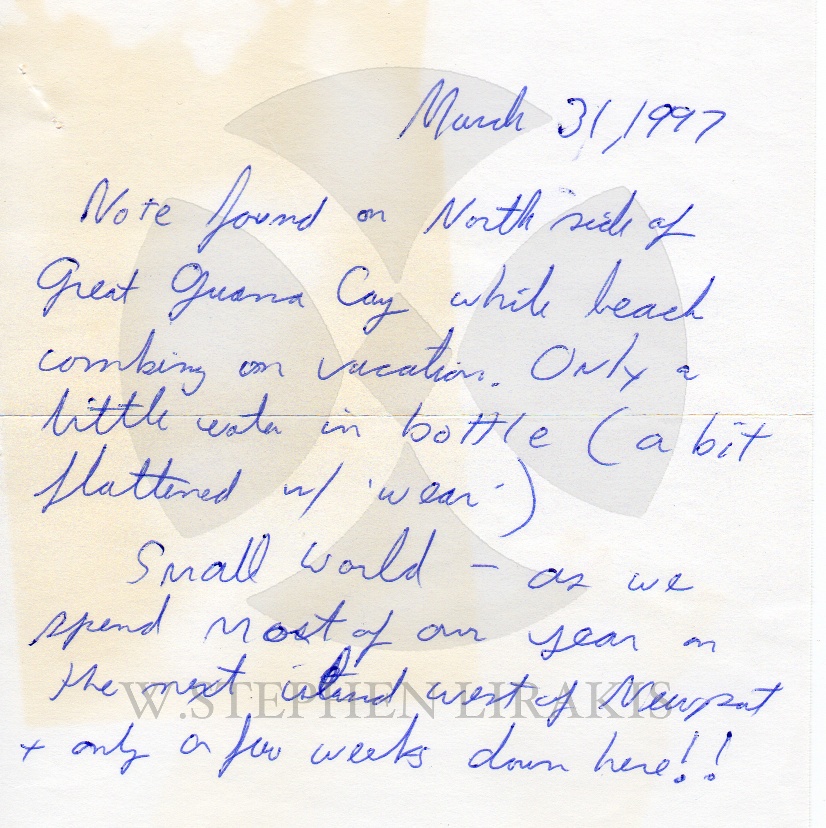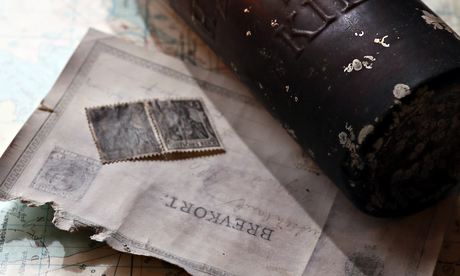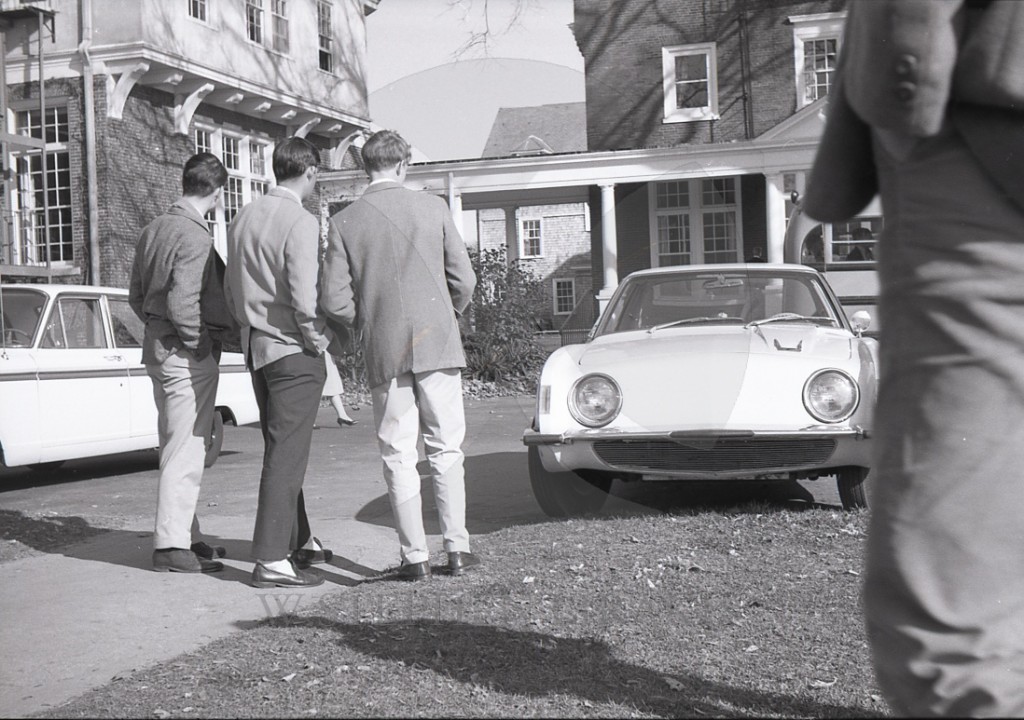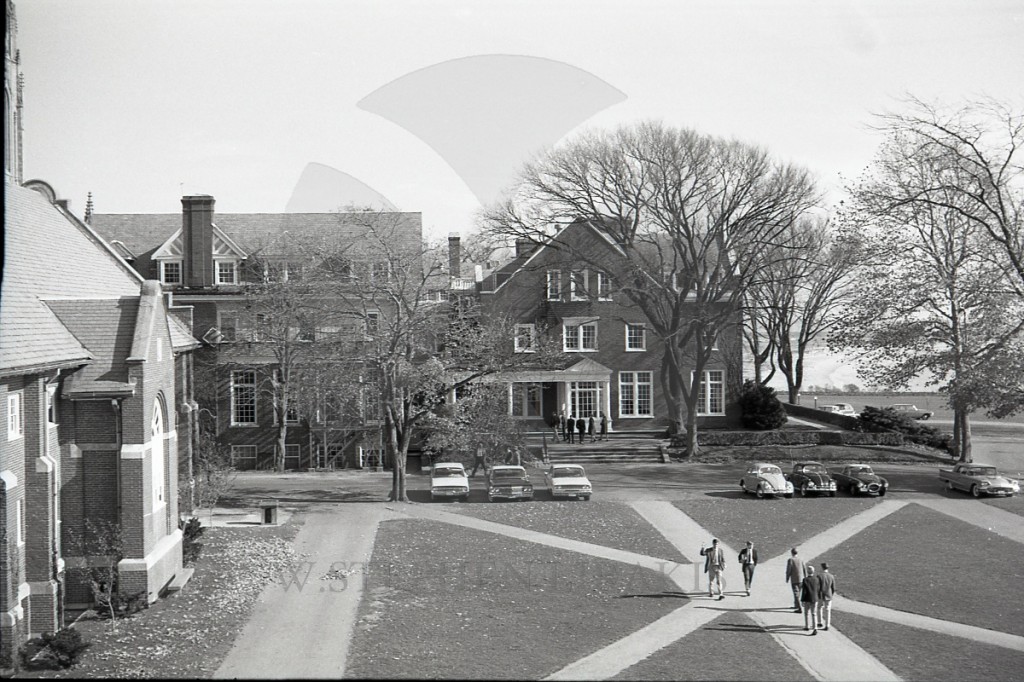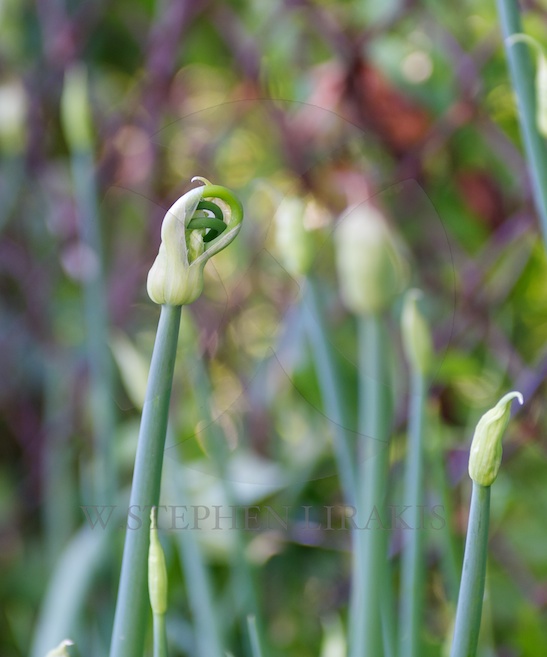I assembled this a few years ago because even I forget some of the boats and events I sailed. Still fond memories; and still making more.
Category: stephen lirakis
SUNSET MOONSET
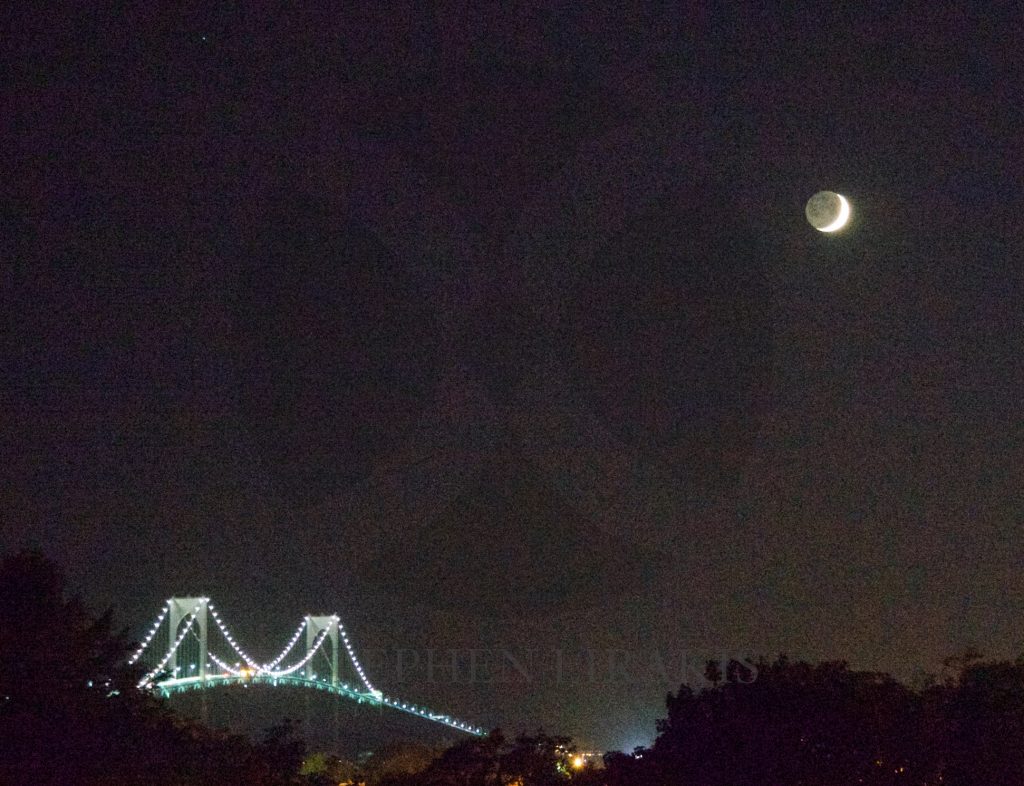
WORKING WATERFRONT, NEWPORT, RI
The Newport of my youth was a working waterfront. fishing boats, commercial boats and yachts co-existing side by side in the same water and the same docks.
Today, the is not a shred of evidence of this life.
SAILING THROUGH LIFE
This is in response to those who asked:”Who are you?” It is a least a dimension.Boats have always been a part of my life. Naturally interwoven with the story of Newport.
LOOKING FOR AMERICA (UNEDITED)
Quickly done and I should wait to publish it; however I am rather pleased with the way it is coming together. I will post a finished copy later.
WHO IS WALKING THE DOG?
One of those vignettes of life. We were to meet Stefan at a coffee shop in Silverlake in Los Angeles. We arrived a little early; I dropped Bernadette and went to park the car. When I arrived at the coffee shop Bernadette had already engaged someone in conversation. The woman had a dog named “Emily”. While the coffee shop had a dog friendly policy there was a man who clearly was disturbed by Emily; especially when she became excited over the attention she was getting. I suggested I take Emily for a walk to let her calm down. When I returned with Emily, it was clear that Stefan was in another part of the coffee shop and we had not seen him. However one of Stefan’s friends saw me walking Emily and said: “Isn’t that your father? and does he have a dog? ”
FRESH WATER
People have been saying for years that water will become more expensive than oil; and more valuable. The signals have been here for a long time. Most of the population either chooses not to acknowledge the impending problem and are willing to “kick the can down the road” or truly ignorant of the problem.
Following the 1968 Transatlantic race, the longest I ever sailed; I returned home in late July and needed to find a summer job before returning to school. I did find a job, on a boat that could not keep help. It was a powerboat, 55 foot Chris Craft. The water tanks held over 500 gallons. On the weekends, tied to the dock I simply had the hose in the fill port turned on and could barely keep up with the consumption. It was the first shocking revelation of total disregard of water use. Remember I had just returned from 27 days at sea on a sailboat with a crew of 8 on which we used under 100 gallons of water.
check out : Peter McBride “Chasing Water”
Colorado River Drought Forces a Painful Reckoning for States

LAKE MEAD, Nev. — The sinuous Colorado River and its slew of man-made reservoirs from the Rockies to southern Arizona are being sapped by 14 years of drought nearly unrivaled in 1,250 years.
The once broad and blue river has in many places dwindled to a murky brown trickle. Reservoirs have shrunk to less than half their capacities, the canyon walls around them ringed with white mineral deposits where water once lapped. Seeking to stretch their allotments of the river, regional water agencies are recycling sewage effluent, offering rebates to tear up grass lawns and subsidizing less thirsty appliances from dishwashers to shower heads.
But many experts believe the current drought is only the harbinger of a new, drier era in which the Colorado’s flow will be substantially and permanently diminished.
Faced with the shortage, federal authorities this year will for the first time decrease the amount of water that flows into Lake Mead, the nation’s largest reservoir, from Lake Powell 180 miles upstream. That will reduce even more the level of Lake Mead, a crucial source of water for cities from Las Vegas to Los Angeles and for millions of acres of farmland.

Reclamation officials say there is a 50-50 chance that by 2015, Lake Mead’s water will be rationed to states downstream. That, too, has never happened before.
“If Lake Mead goes below elevation 1,000” — 1,000 feet above sea level — “we lose any capacity to pump water to serve the municipal needs of seven in 10 people in the state of Nevada,” said John Entsminger, the senior deputy general manager of the Southern Nevada Water Authority.
Since 2008, Mr. Entsminger’s agency has been drilling an $817 million tunnel under Lake Mead — a third attempt to capture more water as two higher tunnels have become threatened by the lake’s falling level. In September, faced with the prospect that one of the tunnels could run dry before the third one was completed, the authority took emergency measures: still another tunnel, this one to stretch the life of the most threatened intake until construction of the third one is finished.
These new realities are forcing a profound reassessment of how the 1,450-mile Colorado, the Southwest’s only major river, can continue to slake the thirst of one of the nation’s fastest-growing regions. Agriculture, from California’s Imperial Valley to Wyoming’s cattle herds, soaks up about three-quarters of its water, and produces 15 percent of the nation’s food. But 40 million people also depend on the river and its tributaries, and their numbers are rising rapidly.
The labyrinthine rules by which the seven Colorado states share the river’s water are rife with potential points of conflict. And while some states have made huge strides in conserving water — and even reducing the amount they consume — they have yet to chart a united path through shortages that could last years or even decades.
“There is no planning for a continuation of the drought we’ve had,” said one expert on the Colorado’s woes, who asked not to be identified to preserve his relationship with state officials. “There’s always been within the current planning an embedded hope that somehow, things would return to something more like normal.”
Unfortunately, the Colorado during most of Lake Mead’s 78-year history was not normal at all.
Studies now show that the 20th century was one of the three wettest of the last 13 centuries in the Colorado basin. On average, the Colorado’s flow over that period was actually 15 percent lower than in the 1900s. And most experts agree that the basin will get even drier: A brace of global-warming studies concludes that rising temperatures will reduce the Colorado’s average flow after 2050 by five to 35 percent, even if rainfall remains the same — and most of those studies predict that rains will diminish.
Already, the drought is upending many of the assumptions on which water barons relied when they tamed the Colorado in the 1900s.
The Colorado basin states tried in the 1920s to stave off future fights over water by splitting it, 50-50, between the upper-basin states of Utah, New Mexico, Colorado and Wyoming and the lower-basin states of Arizona, Nevada and California.
In fact, the deal underestimated how much water the fast-growing lower-basin states would need. During most of the wet 20th century, however, the river usually produced more than enough water to offset any shortage.
Now, the gap between need and supply is becoming untenable.
Lake Mead currently stands about 1,106 feet above sea level, and is expected to drop 20 feet in 2014. A continued decline would introduce a new set of problems: At 1,075 feet, rationing begins; at 1,050 feet, a more drastic rationing regime kicks in, and the uppermost water intake for Las Vegas shuts down. At 1,025 feet, rationing grows more draconian; at 1,000 feet, a second Las Vegas intake runs dry.
Lake Powell is another story. There, a 100-foot drop would shut down generators that supply enough electricity to power 350,000 homes.
The federal Bureau of Reclamation’s 24-month forecasts of water levels at Powell and Mead do not contemplate such steep declines. But neither did they foresee the current drought.
“We can’t depend on history to project the future anymore,” Carly Jerla, a geological hydrologist and the reclamation bureau’s Colorado River expert, said in an interview. The drought could end tomorrow, she said — or it could drag on for seven more years.
That raises questions that the states are just beginning to sort out.
The river’s upper-basin states are worried that they might have to curb their consumption to meet their obligations downstream. But the thorniest problems are in the lower basin, where a thicket of political and legal deals has left Arizona holding the bag should the Colorado River continue to diminish.
In the 1960s, California’s legislators demanded first dibs on lower-basin water as a condition of supporting federal legislation to build the Central Arizona Project, a vast web of canals irrigating that state’s farms and cities. Should rationing begin in 2015, Arizona would sacrifice a comparatively small fraction of its Colorado River allotment, while California’s supply would remain intact.
Painful as that would be, though, it could get worse: Should Mead continue to fall, Arizona would lose more than half of its Colorado River water before California lost so much as a drop.
That would have a cascading effect. The Central Arizona Project would lose revenue it gets from selling water, which would raise the price of water to remaining customers, leading farmers to return to pumping groundwater for irrigation — exactly what the Central Arizona Project was supposed to prevent.
“By going back to the pumps, you’ll have made the decision that agriculture will no longer be an industry in central Arizona,” David Modeer, the project’s general manager, said in an interview.
Even Californians doubt Arizona would stand for that, but no successor to the 1960s agreement is in place. And California has a vital interest in holding on to its full allotment of water. The Southern California region using Colorado water is expected to add six million people to the existing 19 million in the next 45 years, and its other water source — the Sierra Nevada to the north — is suffering the same drought and climate problems as the Colorado basin.
“The basic blueprint of our plan calls for a reliable foundation that we then build upon, and that reliable foundation is the Colorado River and Northern California water,” said Jeffrey Kightlinger, the general manager of the Metropolitan Water District of Southern California. “To the extent we lose one of those supplies, I don’t know that there is enough technology and new supplies to replace them.”
There may be ways to live with a permanently drier Colorado, but none of them are easy. Finding more water is possible — San Diego is already building a desalination plant on the Pacific shore — but there are too few sources to make a serious dent in a shortage.
That leaves conservation, a tack the lower-basin states already are pursuing. Arizona farmers reduce runoff, for example, by using laser technology to ensure that their fields are table flat. The state consumes essentially as much water today as in 1955, even as its population has grown nearly twelvefold.
Working to reduce water consumption by 20 percent per person from 2010 to 2020, Southern California’s Metropolitan Water District is recycling sewage effluent, giving away high-efficiency water nozzles and subsidizing items like artificial turf and zero-water urinals.
Southern Nevada’s water-saving measures are in some ways most impressive of all: Virtually all water used indoors, from home dishwashers to the toilets and bathtubs used by the 40 million tourists who visit Las Vegas each year, is treated and returned to Lake Mead. Officials here boast that everyone could take a 20-minute shower every day without increasing the city’s water consumption by a drop.
Moreover, an intensive conservation program slashed the region’s water consumption from 2002 to 2012, even as the area added 400,000 residents.
Even after those measures, federal officials say, much greater conservation is possible. Local officials say they have little choice.
“The era of big water transfers is either over, or it’s rapidly coming to an end,” said Mr. Entsminger, the southern Nevada water official. “It sure looks like in the 21st century, we’re all going to have to use less water.”
WHERE WERE YOU ON NOVEMBER 22, 1963?
I expect everyone of a certain age remembers where they were when the news was announced of the assassination of President Kennedy. Saint Georges’ School had just been let out for Thanksgiving vacation. I was hitchhiking into Newport along Memorial Boulevard. A step van stopped to pick me up and told me the news. I wasn’t certain whether or not to believe him and initially dismissed the thought.
It took me a long time to absorb the idea that an assassination of an American President could actually happen. I believe the loss of that kind of security is what people really mean when they refer to the loss of innocence. It could never happen here. It certainly spoiled my Thanksgiving holiday.
RAMBLINGS OF THE MIND
IT WAS A SPLENDID DAY. THE HUMIDITY MOVED OUT REPLACED BY SUN WIND AND DRY AIR. A GOOD OPPORTUNITY TO WASH AND DRY; FOLLOWED BY SANDING AND PAINTING. ALL THE TIME WHILE THIS WAS GOING ON THE BAMBOO GREW 2 FEET. IF ONLY I HAD STARTED A CAMERA ON A TRIPOD WITH TIME LAPSE.
WHILE PAINTING I STARTED TO ASK MYSELF WHIC WERE THE BOOKS WHICH MOST IMPACTED ME. AS I STARTED COMPILING A LIST IN MY HEAD; I IMMEDIATELY STARTED LISTING THE AUTHORS I REALLY LIKED. THIS LIST GREW QUICKLY. FACED WITH THE PROSPECT OF CUTTING NAMES FROM THE LIST I COULD NOT SO I STOPPED AND CHANGED SUBJECTS.
I WILL LIST A FEW NONE THE LESS.
‘THE LAST LEAF” OLIVER WENDEL HOLMES
“THE MAN WITHOUT A COUNTRY” EDWARD EVERETT HALE
“LIVING WELL IS THE BEST REVENGE” CALVIN TOMPKINS
“WEST BY NIGHT” BERYL MARKHAM
“TRACES OF THOMAS HERIOT” MURIEL RUKEYSER
“MOBY DICK” HERMAN MELVILLE
MY PREDICAMENT IS OBVIOUS, WHAT ABOUT THOMAS WOLF, WILLIAM FALKNER, F. SCOTT FITZGERALD, ETC.?



